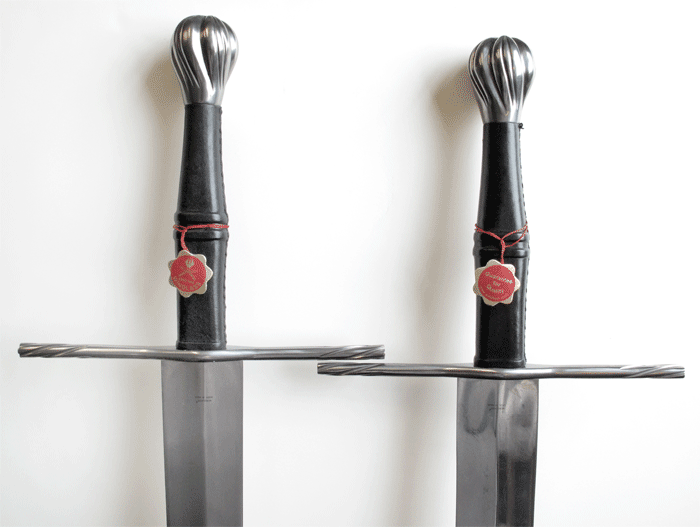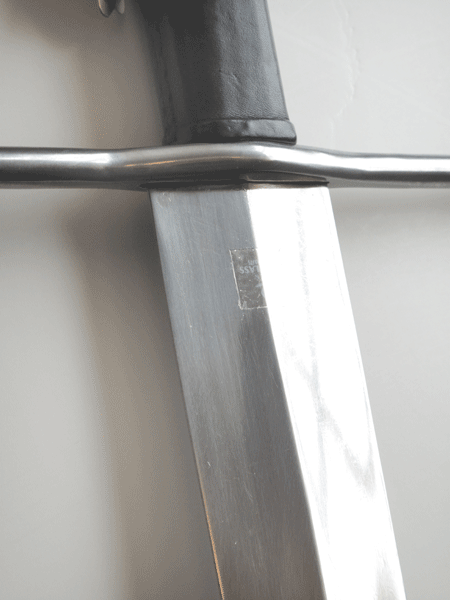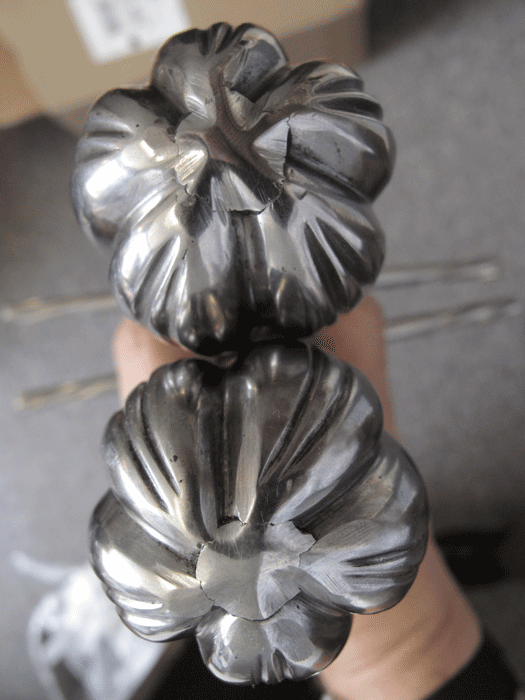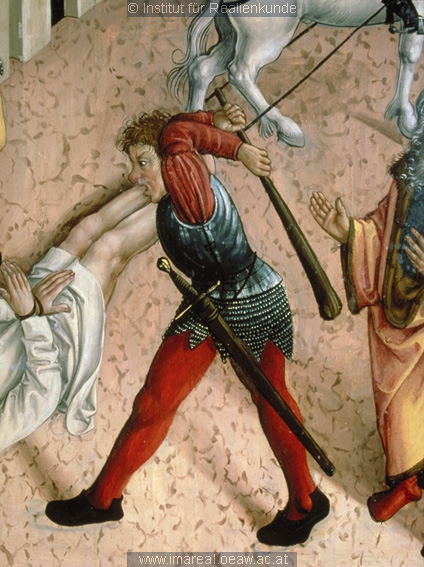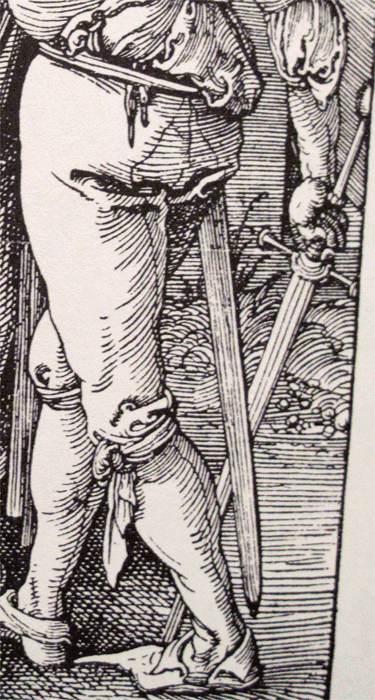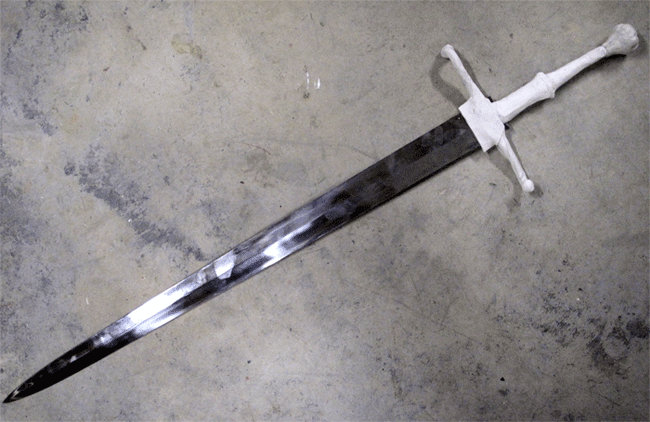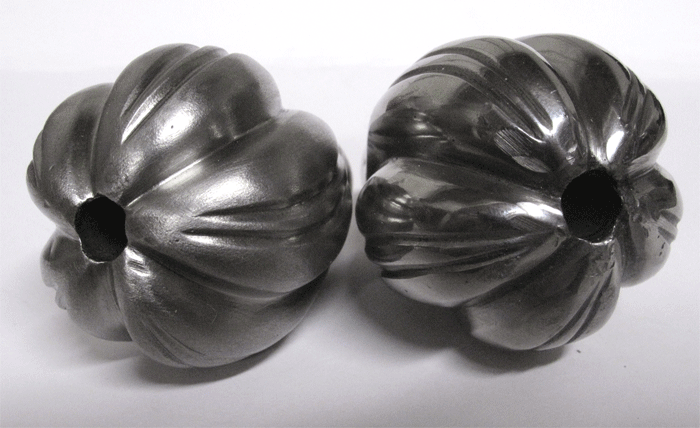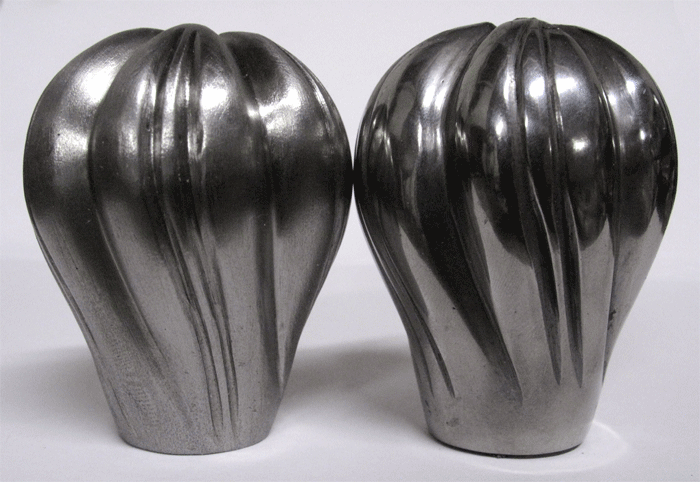I'm very impressed by this sword. In a perfect world the blade might be slightly thicker, but this is a very broad cutting sword, so the flex doesn't seem unreasonable. The sword is 3lbs 2oz but the POB is 3.5" below the cross. It's very lively. I'd probably prefer a flat grind as opposed to a hollow grind, as that would shift the POB down a bit, give the weapon a stronger blade presence. Those who'd rather have power over speed could turn this into a single-hand sword like the one shown in one of the paintings below. The resulting POB would let you feel the blade more.
On another recent thread here we were discussing the development of the Continental European execution sword and I noted that in the decapitation images I see in German/Austrian artwork of 1450-1530, the weapon of choice is just a broad-blade longsword or bastard sword. Handling this reminds me why a Type XVIII would be such an efficient means of execution. Scary--especially with the very slight hollow-grinding of this blade.
This blade is Windlass blunt, which is to say that it gives the impression that while it won't cut your hand if you run it down the edge, it could still easily kill or maim when swung with intent.
I bought two of these swords. This gives me the interesting opportunity to examine Windlass swords side-by-side. What I find is not identical swords but swords enough alike that if I saw them apart from each other I'd never know which was which, with one minor exception (see next para). The only noticeable difference when the swords are together is that one is longer by maybe .5". You can see the difference in the photo below.
In spite of the "Guaranteed For Quality" tags on the hilts, I found a strange flaw in the tip of one of the swords. What I first thought was a slight bend at the tip turned out to be a small bit that hadn't been ground properly. Easily fixed in a few minutes of filing.
Grip and Scabbard: Blah. Wondering if I could remove the grip wrap without any tools, I found that I could easily pull out the coarse stitching with my fingers and peel the leather off, baring the grip in under 30 secs! The grip core is much better than on, say, the German Bastard Sword I got a few years ago. That was just a dowel with some flats ground in. If this one fits the tang well it could easily be refined in-place and re-covered if you're not inclined to strip the weapon.
I might be able to modify one of the scabbards for use with my A&A Town Guard sword (all-leather construction is appropriate for that period) but the things might be too bulky even for that application.
Pommel: Much better than shown in other photographs I've seen (MRL, KOA). The fluting extends almost to the base of the pommel, as it should, so there isn't that "dead zone" at the base of the pommel that I thought would present a problem. I'd say the base is still just a bit too broad for my taste and for the new grip I'll be making. That will require some time with the file or Dremel. The peen is large and filed to blend with the lines of the pommel fluting. I'd clean it up and otherwise leave it as it is but I really need to get that cross off, so I'll take the usual route of breaking off the grip, sliding down the pommel to expose the peen, and filing/grinding/cutting down the peen so I can remove the cross and prepare for an appropriate peen block.
In short, it's an outstanding bargain for a good sword that is about to become much better. If you got one of these yesterday, pat yourself on the back, especially if it's your first sword.
